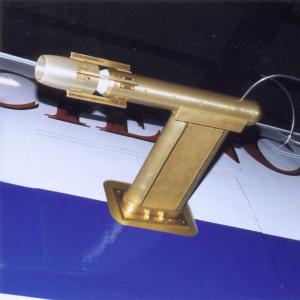The NCAR counterflow virtual impactor (CVI) (Noone et al., 1988; Twohy et al., 1997) is an airborne instrument that can be used for studies of aerosol/cloud interactions, cloud physics, and climate. At the CVI inlet tip, cloud droplets or ice crystals larger than about 8 µm aerodynamic diameter are separated from the interstitial aerosol and impacted into dry nitrogen gas. This separation is possible via a counterflow stream of nitrogen out the CVI tip, which assures that only larger particles (cloud droplets or ice crystals) are sampled. Because droplets or crystals in a sampling volume of about 200 l/min are impacted into a sample stream of approximately 10 l/min, concentrations within the CVI are significantly enhanced. The water vapor and non-volatile residual nuclei remaining after droplet evaporation are sampled downstream of the inlet with selected instruments. These may include a Lyman-alpha or similar hygrometer, a condensation nucleus counter, an optical particle counter, filters for chemical analyses, or user instruments.
Counterflow Virtual Impactor
Instrument Type
Measurements
Aircraft
Point(s) of Contact
(POC; PI),
(Prev PI)
Groups


